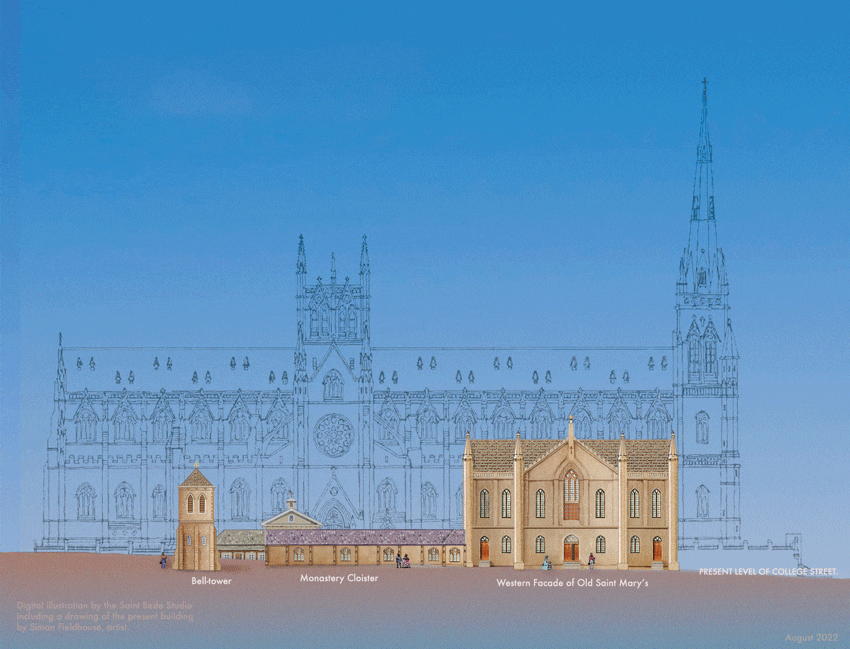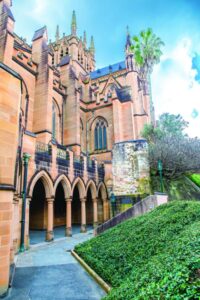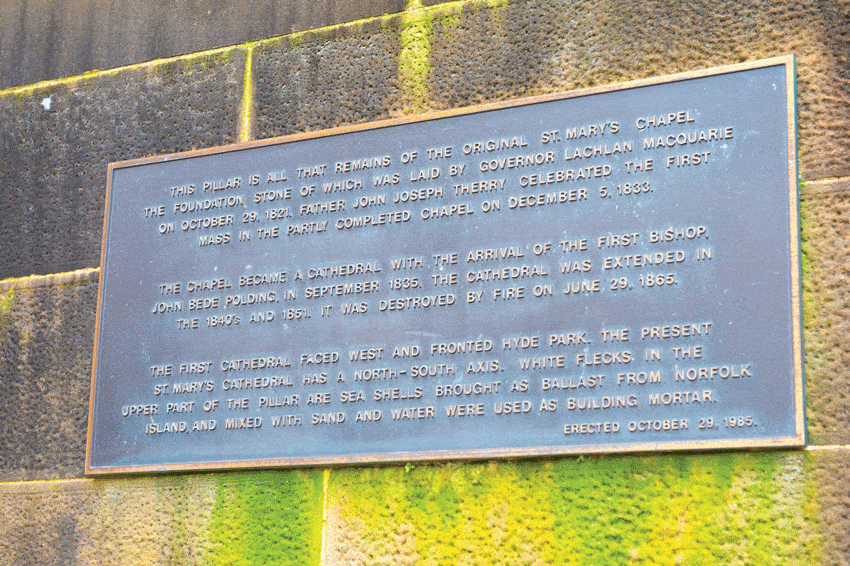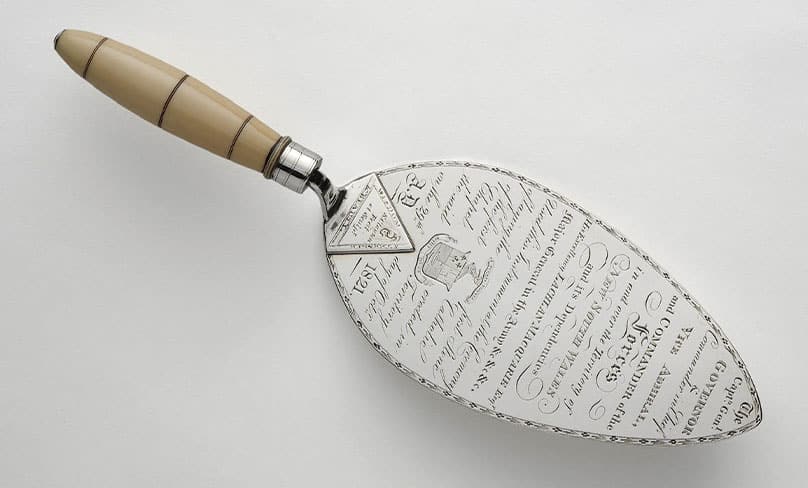
By Professor James Franklin
The year 1821 saw two notable events, one marking the end of the old order and the other the beginning of the new.
In that year Napoleon died in British captivity on St Helena, a remote island in the South Atlantic. His death marked the end of the upheavals of the French Revolution and his invasions of most of Europe.
That era of mass destruction, which had threatened the existence of the Church as much as civil society, ended with Napoleon’s defeat at Waterloo in 1815 and the restoration of the monarchist European order at the Congress of Vienna. The new political order would last largely unchanged for a hundred years, until destroyed in the First World War.
With the world freed from tyranny and more stable government in place, a new wave of faith began.
In that time the fate of most of the world was dominated, for both good and ill, by the European powers. For a distant region like Australia, it was significant that Britain, the power most responsible for defeating Napoleon, was unchallenged as a world power.
And in the second significant event of 1821, the British Parliament passed an act for the building of the first public railway line with steam locomotives. The Industrial Revolution would power Britain to world economic leadership. Australia, protected for a century by the undefeated Royal Navy, would become an integrated part of the British Empire. Its language, customs, laws and institutions were “a chip off the old block”.
The revival of faith
The new conditions proved to be fruitful for an extraordinary wave of revival of the Catholic faith and of Christianity more generally.
The 18th Century was a low point in the history of the Church. The atheist ideas of the French “Enlightenment” seemed to be the way of the future and the Church was identified with decrepit political regimes like that of Louis XVI. When the Revolution swept those away, violent persecutions of the Church ensued.
When Pope Pius VI died as a captive of the French in 1799 and Rome was still occupied by revolutionary armies, the Church was possibly at its lowest ebb in recent centuries. The next papal conclave almost did not take place, but enough cardinals were assembled in Venice to elect a successor. Pius VII proved adept in reaching an accommodation with Napoleon and lived to see the restoration of an acceptable political order after Waterloo.

Catholicism regained the intellectual as well as the political initiative. With Enlightenment ideas tainted as sources of the disasters of the Revolution, the way was open for a renewed appreciation of more conservative and traditionalist ideas such as those of Joseph de Maistre.
To Rousseau’s naïve and corrosive slogan, “Man is born free and everywhere he is in chains,” de Maistre replied “You might as well say that sheep are born carnivorous and everywhere they eat grass.” He meant that a due respect for authority is not only widely observed but is natural to humans and essential to common life.
With the world freed from tyranny and more stable government in place, a new wave of faith began. In France and Ireland especially, a burst of spiritual energy transformed people’s lives. Australians will recognise the names of some of the leaders of the French Catholic revival because the organisations they founded played such a crucial role here: especially Marcellin Champagnat, who founded the Marist Brothers in 1816.
The St Vincent de Paul Society followed in 1833 and the Missionaries of the Sacred Heart in 1854. A physical symbol of the revival was Viollet-le-Duc’s restoration of the Cathedral of Notre Dame in Paris.
Although the medieval walls survived, the inside of the Cathedral was derelict after the destruction of the Revolution. The spire that collapsed spectacularly in the fire of 2019 was a creation of the restoration of the mid-nineteenth century.
The British Empire, opportunity for Irish evangelisation
In Britain, too, the fortunes of religion took a turn for the better in the 19th Century. An Evangelical Revival contributed to the abolition of slavery, and legal restrictions on Catholics in Britain and Ireland eased.
Although the British crown was linked to the Anglican Church, official toleration of Catholics was well advanced by 1821 and Catholic Emancipation was completed by the Duke of Wellington’s government in 1829. Catholics then had all normal legal and political rights.
AN EVANGELICAL REVIVAL CONTRIBUTED TO THE ABOLITION OF SLAVERY, AND LEGAL RESTRICTIONS ON CATHOLICS IN BRITAIN AND IRELAND EASED.
It became clear to Church leaders that the British Empire, though governed by a regime considered heretical, was an opportunity as well as a problem. That arose from the Irish diaspora.
Millions of Irish, most of them English speakers, left poverty-stricken Ireland and settled in the countries of the British Empire and the United States. If they could be provided with priests and nuns to preserve and strengthen their faith, they would be the seeds of extensive communities of faith in those large parts of the world.
Ireland itself, like France, was experiencing a religious revival. Australians gratefully remember the Christian Brothers, founded in 1802, the Sisters of Charity, founded in 1815, who provided the first religious sisters to come to Australia in 1838, and the Sisters of Mercy, founded in 1831. The Irish orders long provided much of the man- and woman-power of the Australian church.

While the high point of the “Irish ecclesiastical empire” was reached in the late 19th Century with the appointment of such leaders as Cardinal Moran in Sydney, the process was well under way earlier.
The arrival of the Irish priests Fathers Therry and Conolly in Sydney in 1820, and their cautious welcome by Governor Macquarie, set the scene for the Catholic Church in Australia – an Irish piety flourishing under state toleration.
In distant Australia, on its smaller scale, a new beginning was being made that would in the rest of the century turn that remote land into a major stronghold of the Church.
Land of opportunity
One aspect of the new Industrial Revolution strongly impacted Australia. A crucial product of English industry was fine wool, which was not easily grown in the cool and wet conditions of England itself.
When Napoleon’s invasion of Spain threatened the supply of Spanish merino wool, John Macarthur touted the strategic advantages of a replacement source. Millions of sheep on the plains of the distant British colony of New South Wales could replace dependence on European sources.
It was a dubious claim at the time but turned out to be true. Wool survives a long sea voyage and with safe sea lanes, Australian wool took a large share of the British market.

The Australian colonies changed from loss-making convict settlements to economically buoyant magnets for immigrants – though often at the expense of the indigenous inhabitants.
Convicts from the poorest British classes and poor Irish immigrants found a land with, for many, opportunities they could never have found at home. The large proportion who maintained their faith were able to support a vigorous growth of churches, schools and religious charitable organisations.
The years around 1821 were an auspicious time for establishing the Catholic Church in Australia. That is because they were a time of new beginnings – political, economic and spiritual – across the world.
Reflection on those years will give insights into the opportunities for reviving faith in today’s world.
